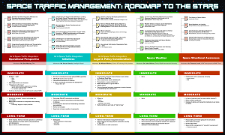Location
Jim Henderson Welcome Center, Embry-Riddle Aeronautical University - Daytona Beach
Start Date
6-11-2014 1:30 PM
Abstract
At the commencement of the space age, satellites were very small objects that subsequently grew in size and complexity. A re-emergence of small satellites is occurring given that technology now allows them to perform certain operations of large satellites. This paper will explore the risk and liability in space traffic situational awareness associated with the proliferation in the deployment of small satellites.
Small satellites encompass a range of space objects referred to as nanosatellites, microsatellites, picosatellites, cube satellites, femtosatellites and other designations. These satellites are generally placed into orbit as part of a “piggyback” payload on other launches or cargo on another space object. However, the precise orbit of a small satellite is generally unknown until after its deployment. Additionally, given their size, small satellites will generally lack the protection from natural space phenomena such as radiation storms, geomagnetic storms solar wind, coronal holes, coronal mass ejections, solar flares, plasma clouds, basic cosmic radiation as engineered into larger satellites. These and other circumstances create potential exposure to fault based liability under the Liability Convention and a corresponding obligation of indemnification or contribution by the owner/operator of a small satellite or other space object. They can also affect coverage under space insurance. This has caused some to consider small satellites to be “space junk,” “space debris” or simply a hazard in the space environment despite their benefits. Accordingly, space traffic situational awareness necessitates recognizing and mitigating the risks associated with the proliferation in the deployment of small satellites.
Area of Interest
Space Situational Awareness
Included in
Small Satellites and Liability Associated With Space Traffic Situational Awareness
Jim Henderson Welcome Center, Embry-Riddle Aeronautical University - Daytona Beach
At the commencement of the space age, satellites were very small objects that subsequently grew in size and complexity. A re-emergence of small satellites is occurring given that technology now allows them to perform certain operations of large satellites. This paper will explore the risk and liability in space traffic situational awareness associated with the proliferation in the deployment of small satellites.
Small satellites encompass a range of space objects referred to as nanosatellites, microsatellites, picosatellites, cube satellites, femtosatellites and other designations. These satellites are generally placed into orbit as part of a “piggyback” payload on other launches or cargo on another space object. However, the precise orbit of a small satellite is generally unknown until after its deployment. Additionally, given their size, small satellites will generally lack the protection from natural space phenomena such as radiation storms, geomagnetic storms solar wind, coronal holes, coronal mass ejections, solar flares, plasma clouds, basic cosmic radiation as engineered into larger satellites. These and other circumstances create potential exposure to fault based liability under the Liability Convention and a corresponding obligation of indemnification or contribution by the owner/operator of a small satellite or other space object. They can also affect coverage under space insurance. This has caused some to consider small satellites to be “space junk,” “space debris” or simply a hazard in the space environment despite their benefits. Accordingly, space traffic situational awareness necessitates recognizing and mitigating the risks associated with the proliferation in the deployment of small satellites.

